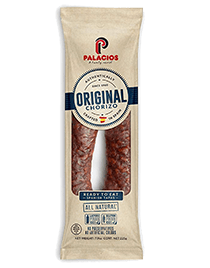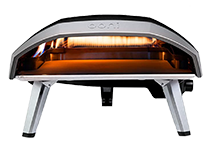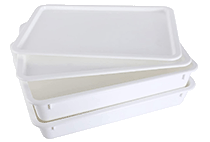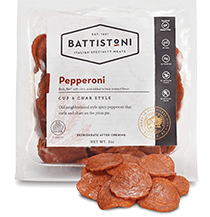Everyone loves pizza. It’s the perfect food that can be modified to fit everyone’s tastes and dietary needs; from gluten-free to yeast-free to low-carb to vegan with nutritional yeast, pizza has you covered. Just like there are many different styles of pizza, there are many ways to make pizza, too.
Key Takeaways:
- The decision to place pizza toppings above or below the cheese depends on factors such as the type of crust, the nature of toppings (fatty or moisture-rich), and desired texture.
- Different pizza styles have different layering approaches. Chicago deep-dish may have layers of cheese, toppings, and sauce, while most others start with crust and sauce.
- Ultimately, the choice of placing toppings above or below the cheese comes down to personal preference. Experimenting with order and preparation methods helps in finding the ideal arrangement based on individual taste preferences.
Table of Contents

One of the biggest debates in the pizza world is which order to add the toppings. It’s a question many home pizzaiolos ask when they start making pizza; should they put pizza toppings above or below the cheese?
Truth be told, there is no easy answer; it depends on the preference of the pizzaiolo and the pizza eaters. But when you start to examine the question, there are a few important things to consider when deciding where to put your pizza toppings, like the type of crust, whether the toppings are vegetables or proteins, and desired pizza texture.
The very word “toppings” implies that they should go on top, right?
When to Put Cheese On Pizza Before the Toppings
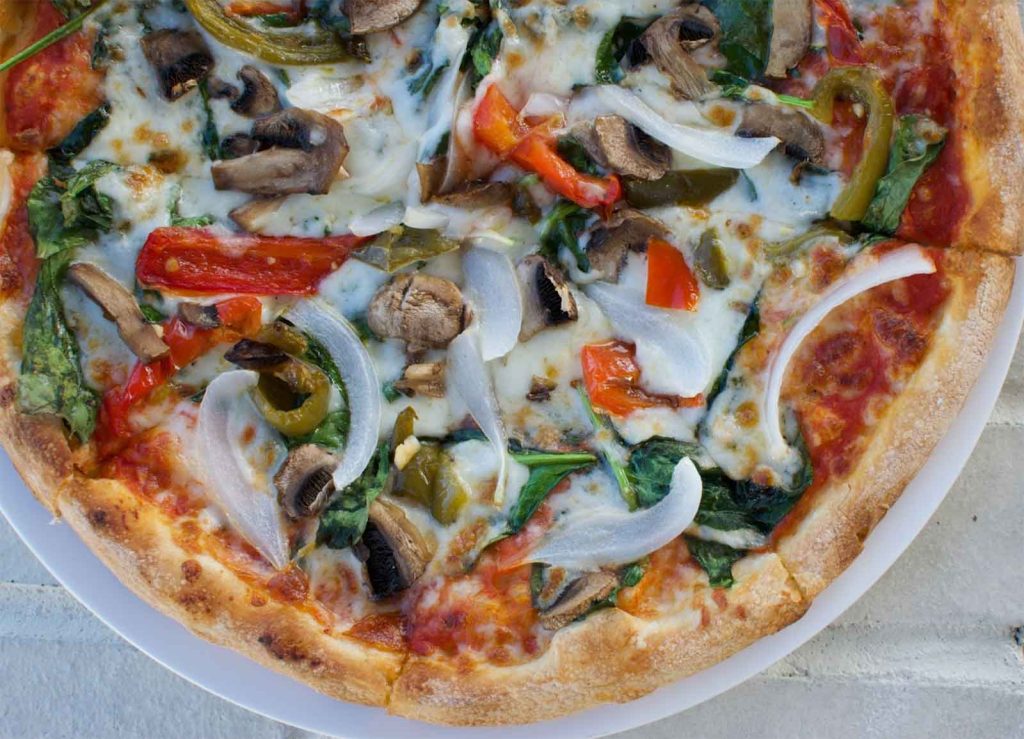
While it all comes down to preference, there are a few times that you really should put the toppings above the cheese. For example, if you are topping your pizza with everyone’s favorite pizza topping, pepperoni, you should put that on top of the cheese.
The hot pizza oven will force the pepperoni to leak greasy fat and curl the edges to a crisp. This is one of the key characteristics of a Detroit-style pizza.
The same rule applies to salami, sausage, Italian sausage, and chorizo. These fatty meats have enough oils and durability to stand up to a hot oven. If you put the meats below the cheese, the fat is going to render out and be trapped under the cheese, which adds even more grease and liquid to the pizza, so fatty meats should definitely go on top.
Now let’s talk about the crust, the base of every great pizza. If you are making a thin crust pizza, like a St. Louis-style pizza, the crust needs extra protection to hold everything together, so layering the cheese first creates a stronger base to add more toppings.
If you like to top your pizza with moisture-rich vegetables like zucchini or mushrooms, add them on top of the cheese. The heat from the oven will let any moisture evaporate and not leave a soggy mess. Putting moisture-rich vegetables below the cheese traps the moisture, and when you slice up the pizza, all of that moisture will ooze out.
Of course, if you are making Chicago-style deep-dish pizza, then you will be layering the cheese, then toppings, then more cheese, and lastly, sauce. Detroit-style pizza adds sauce on top too. But most other styles of pizza start with crust and sauce.
One thing to consider is the presentation. Pizzas with toppings on top of the cheese look better. A hungry diner can identify each topping and knows exactly what they are getting.
Another thing to consider is the amount. How much cheese you put on your pizza, whethere that’s half cheese or double cheese or normal cheese, whatever that is, it will all be affected.
Or just make macaroni and cheese pizza, and then your toppings are the cheese!
When You Should Put Pizza Toppings Below the Cheese
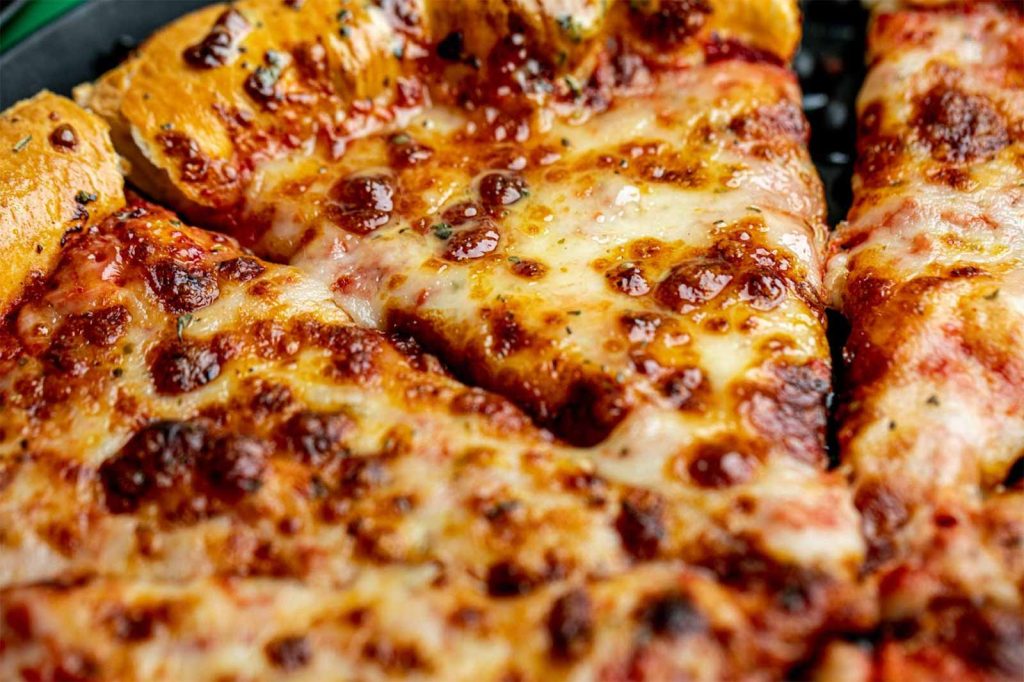
Putting pizza toppings below the cheese makes sense when you are adding ingredients that can easily burn. For example, very thinly sliced vegetables like onions and green peppers will blacken and burn to dust before the pizza even gets out of the oven.
The solution to that is to hide them below the cheese. This is a good option when using less fatty proteins like chicken and shrimp, which can quickly dry out if cooked on top of the cheese. This is what we do with our local MN ‘sota style pizza.
Ok, so we know we just said to put vegetables on top of the cheese due to moisture, but there is an exception here; if you dry out the vegetables before adding them to the pizza, you can put them under the cheese.
For example, roasting zucchini, sautéing onions and peppers, or dry-roasting mushrooms. It is all about consistency and making sure the pizza is the right texture, finding the balance between a wet soggy mess and an overly dry pizza.
Another common argument for toppings to be placed under the cheese is that the cheese acts as a type of glue and keeps all of the toppings in place. This makes sense, especially if you are using a thicker crust where the melted cheese on top is a structural component of the pizza.
Choosing the best cheese grater for homemade pizza will allow you to glue as many toppings together as you want.
Pizza Cheese on Top or Bottom: Best of Both Worlds
The world is never black and white; instead, it’s always shades of gray, and you don’t have to be completely on one side or the other. For us, we have found a compromise that makes for an amazing pizza. We generally like to put our toppings on top of the cheese because we like to see the combination of pepperoni, peppers, mushrooms, and onions.
We have said it before and will say it again: pizza is art, and we want to see what we are eating. So how do we keep the vegetables from drying out? We either parmcut them in bigger chunks which lets them withhold the heat and not turn black, or we precook the vegetables to remove the moisture.
We also like to add a light sprinkle of Parmigiano Reggiano or Grana Padano to the top of the pizza before tossing it in the oven. This keeps the toppings in place and protects them from falling off during the cooking process and transferring in and out of the oven.
It took some trial and error to figure out the best order to add our favorite toppings, and we believe we have cracked the code to the perfect pizza. But again, it comes down to personal preference, so it’s a good idea to experiment a little to figure out the best order for your favorite pizza toppings.
Pro Pizza Topping Tips

- Add arugula, spinach, fresh basil, or other delicate green herbs in the last few minutes of cooking, or massage them with olive oil and add them to the pizza when it’s fully cooked.
- Always add prosciutto crudo after the pizza is cooked.
- Squeeze moisture out of wet ingredients like fruit: olives, artichokes, pineapple, jalapeños, fresh tomatoes, etc., with a clean paper towel.
- Fresh mozzarella should be dried and added in small pieces to keep the pizza from getting too soggy.
- Pay attention to how long you’ve had your parmesan cheese.
- Never add uncooked protein to a pizza. A pizza is in the oven for a short time, and the protein won’t have enough time to cook.
- Pepperoni, salami, and other deli meats do not need to be precooked.
- Keep in mind that kids like pizza, too, and they have their own preferences.
Frequently Asked Questions
Should I always put pizza toppings above the cheese?
No, the placement of pizza toppings depends on various factors, including the type of crust, the nature of toppings, and desired texture. Fatty meats like pepperoni are often recommended on top, while thinly sliced vegetables prone to burning may be better placed below the cheese.
Can I put moisture-rich vegetables below the cheese?
While it’s generally advised to place moisture-rich vegetables like zucchini or mushrooms on top of the cheese to allow moisture to evaporate, there’s an exception. If you dry out the vegetables before adding them to the pizza, you can place them under the cheese without creating a soggy mess.
What’s the recommended order for making a Chicago-style deep-dish pizza?
For Chicago-style deep-dish pizza, the suggested order is to layer the cheese, then toppings, followed by more cheese, and finally, sauce. Detroit-style pizza also adds sauce on top. However, most other pizza styles typically start with crust and sauce.
Does the placement of toppings affect the pizza’s appearance?
Yes, pizza with toppings on top of the cheese generally look better. The visual presentation allows your eaters to easily identify each topping and know exactly what they are getting.
How can I prevent toppings from falling off during baking and transferring the pizza in and out of the oven?
To keep toppings in place, a light sprinkle of Parmigiano Reggiano or Grana Padano, or another high temp cheese, on top of the pizza before baking can act as a “glue.” This helps protect toppings from falling off during the cooking process and when transferring the pizza in and out of the oven.
Are there any additional tips for adding delicate ingredients to pizza?
Yes, delicate ingredients like arugula, spinach, fresh basil, or other green herbs should be added in the last few minutes of cooking or massaged with olive oil and added after the pizza is fully cooked. Additionally, prosciutto crudo should be added after the pizza is cooked to preserve its delicate texture.
How long should I cook pizza with uncooked protein toppings?
Uncooked protein, such as chicken, should be avoided on a pizza since the baking time is relatively short. To ensure the protein is fully cooked, it is recommended to pre-cook it before adding it as a topping.
Can I experiment with different topping orders?
Absolutely. I totally encourage experimenting to find the best order for your favorite pizza toppings based on personal preferences. Pizza is an art, and finding the perfect combination may require some trial and error.
What’s your verdict? Should you put your pizza toppings above or below the cheese?

